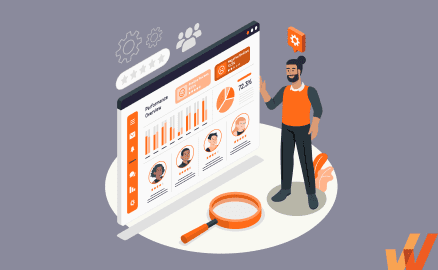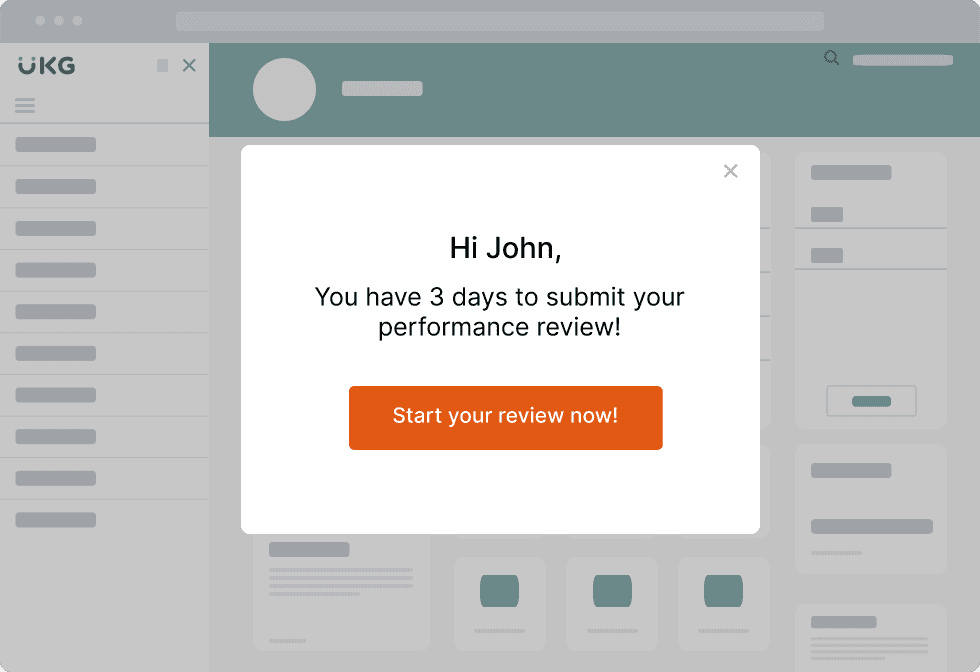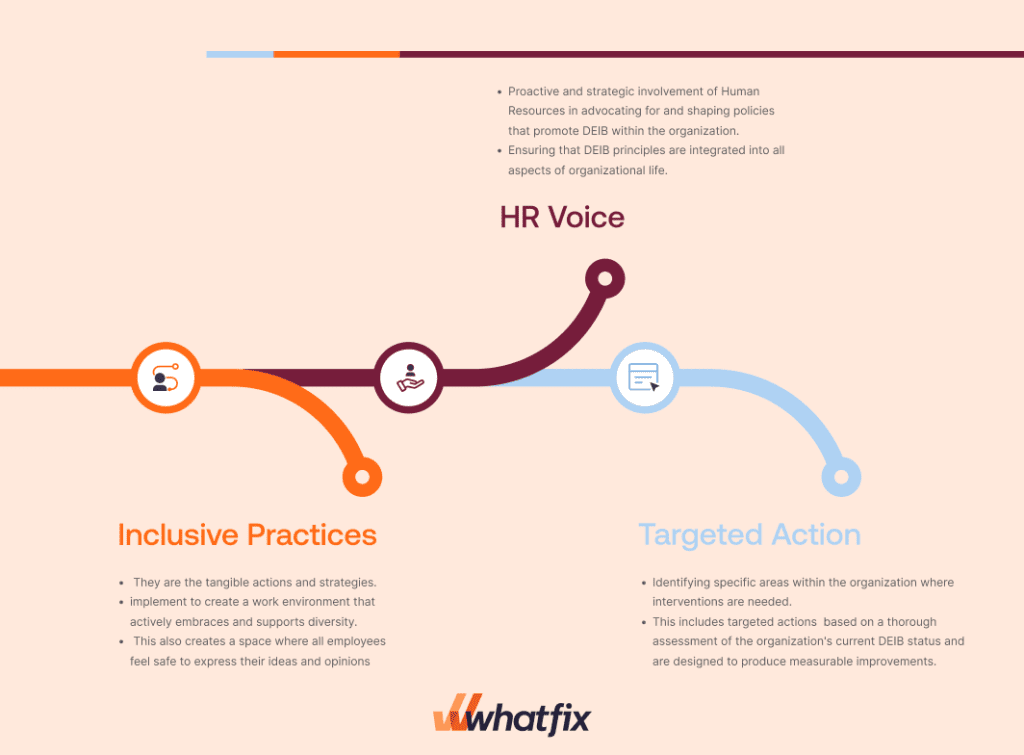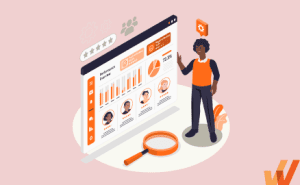15 Critical HR Trends To Watch in 2024
- Published: November 30, 2022
- Modified: April 19, 2024


From addressing ever-widening talent gaps to preparing for the shift in skills needs that AI innovations are setting into motion, the challenges and trends for HR leaders in 2024 are exciting and filled with high-priority initiatives that have executives expecting innovation from their HR departments.
HR expert and author Josh Bersin describes HR trends as a group of initiatives that leaders implement to go beyond discussing transformation. “We’re no longer talking about a ‘getting a seat at the table,’ we’re now sitting there,” he says.
Let’s look at the most significant HR trends we’ve identified, drawing from the anticipated shifts.
What are the most significant HR trends in 2024?
- Enabling employees with frictionless digital experiences and processes
- More transparency on DEI efforts
- Redefining Environmental, Social, and Governance (ESG) programs
- Reskilling and upskilling for the digital age
- Support employees with learning embedded in the flow of work
- Focus on employee well-being in hybrid environments
- Attracting and retaining talent
- Rethink productivity and resourcing strategies
- Investing in GenAI to improve employee productivity
- Making data-driven HR and people decisions
- Workplace flexibility
- Increased importance of cognitive skills
- The shift toward a people-first culture
- Employee self-serviceability
- HR meets PR
15 Biggest HR Trends to Watch in 2024
Let’s explore the major HR trends that your HR team can focus on moving forward.
- Strengthening employees’ digital experiences
- Diversity, equity, inclusion, and belonging (DEIB)
- Redefining environmental, social, and governance (ESG) programs
- Reskilling and upskilling for digital age
- Support employees with learning embedded in the flow of work
- Focus on employee wellbeing in hybrid environments
- Talent marketplace
- Rethink productivity and resourcing strategies
- Investing in GenAI to improve employee productivity
- Making data-driven HR and people decisions
- Workplace flexibility
- Increased importance of cognitive skills
- The shift toward a people-first culture
- Employee self-serviceability
- HR meets PR
1. Strengthening employees’ digital experiences
Digitization has been at the epicenter of HR discussions for a long time, so what’s new about it in 2024?
As companies become more comfortable with digital tools, their technology stacks are grown to account for more complex analytics, communication channels, and project management.
Increasing digitization tends to introduce new problems for HR departments and managers, including digital burnout, lower employee engagement, simplifying access to resources, ensuring system interoperability, and streamlining communication channels through user-friendly interfaces.
However, an intentional and targeted approach to digitization can help overcome software abundance and enable digital dexterity in the workplace.
A digital adoption platform (DAP) like Whatfix empowers HR teams to facilitate transformation by taking an employee-end-user approach. With Whatfix, HR and IT teams can create in-app assistance, guidance, and support for employees using mission-critical software, like their HCM system like Workday, SuccessFactors, UKG Pro, etc.
A DAP facilitates seamless onboarding and software training through in-app guidance, contextual assistance, and personalized support, directly within the application interface.
By providing real-time help and proactive training, DAPs reduce the learning curve and minimize frustration associated with new technologies. This enhances productivity and boosts overall digital literacy across the organization.
It goes beyond onboarding and training. With Whatfix, provide employees with assistance in the flow of work, at critical moments, with role-based support. Build HCM in-app training experiences for your HR admins, hiring managers, people managers, and employees to drive HR business outcomes.
For example, create an in-app Pop-Up on your HCM to alert employees who haven’t finished their yearly performance review – including a link that guides them step-by-step through the process.

Include a Self Help assistance that overlays your HCM that includes quick links to contextually relevant information and knowledge.

Integrate your company policies, HCM process SOPs, LMS, intranet portal, and other company resources into one help center for end-users to quickly find process documentation and IT support.
2.Diversity, equity, inclusion, and belonging (DEIB)
2024 is the year of reinvention of diversity, equity, inclusion, and belonging (DEIB).
Beyond the social impact, employees want to work for companies that take a stance on DEIB issues. 80% of workers expect their CEO to take a public stand on discrimination.
Not addressing the elephant in the room will lead to difficulties in attracting, engaging, and retaining talent. Therefore, we propose implementing a systemic DEIB, which includes three core elements:

- Inclusive practices: Strategies that organizations implement to create a work environment that actively embraces and supports diversity. These practices range from inclusive hiring strategies that seek to minimize bias and broaden talent pools, to fostering inclusive communication across the organization. This also includes creating spaces where all employees feel safe to express their ideas and opinions, implementing mentorship programs that support underrepresented groups, and ensuring accessibility in both physical and digital workspaces.
- HR voice: The HR voice refers to the proactive and strategic involvement of Human Resources in shaping policies that promote DEIB within the organization. HR professionals are often at the forefront of DEIB efforts, ensuring that DEIB principles are integrated into all aspects of organizational life—from recruitment and hiring practices to training programs, performance evaluations, and succession planning.
- Targeted action: Targeted action involves identifying specific areas within the organization where interventions are needed to advance DEIB objectives and implementing focused initiatives to address these gaps. This involves targeted recruitment efforts to improve workforce diversity, tailored development programs to eliminate career progression barriers for certain groups, or specific policy changes aimed at enhancing equity in compensation and benefits.
3. Redefining environmental, social, and governance (ESG) programs
An ESG program is a framework that helps companies deliver a community-driven or impact-driven purpose while minimizing risk. It inspires stakeholders and investors to believe in a company and its mission.
Fifty-three percent of employees want their companies to take action on the issues they care about. But in today’s bustling online communities and rapid social sharing, a company’s activities are more scrutinized than ever.
ESG programs must be more transparent and authentic than broad big-budget initiatives by multinational corporations. It’s a people-driven commitment that companies of all sizes know they need to champion. Talent today isn’t afraid to voice their opinions if they believe a company acts against their moral and ethical beliefs.
Even if you’re a cash-strapped startup, 2024 is the year for doubling down on ESG by having a definite purpose and consistent steps mapped toward backing that purpose up. Explore ways to reach audiences through social channels or targeted outreach, and invest in efforts to deliver a shared message that resonates with your audience. Even smaller-scale initiatives can be amplified in significant ways with creative digital campaigns.
4. Reskilling and upskilling for digital age
In 2024, a notable shift in hiring dynamics is expected across all sectors, largely driven by demographic changes, including the retirement of highly skilled, experienced workers. This generational turnover will leave a gap that younger, less experienced employees will find challenging to fill. In response, many organizations are turning inward, focusing on developing their existing workforce rather than seeking external talent.
Hence, upskilling and reskilling are set to become major strategies for HR departments looking to fill roles in 2024. Upskilling efforts are designed to enhance an employee’s existing skills, increasing their proficiency and enabling them to take on more complex roles within their current domain. On the other hand, reskilling prepares employees for entirely new roles, equipping them with the skills needed to transition to different parts of the organization.
Upskilling and reskilling strategies will not only navigate the complexities of a shrinking hiring pool but also foster a culture of continuous learning and adaptability within the organizations. Additionally, by focusing on internal talent development, organizations can enhance employee satisfaction and retention, creating a more motivated and committed workforce prepared to meet future challenges.
5. Support employees with learning embedded in the flow of work
An emerging enterprise learning and development concept is learning in the flow of work, which is ready to shake up the $200 billion corporate training market, as it focuses on the kind of corporate L&D that empowers employees with the right learning materials, at the right time.
Learning in the flow of work integrates skill development seamlessly into the daily activities of employees, rather than pulling them out of their work environment for separate training sessions. This approach leverages natural work processes as opportunities for learning, utilizing tools and technologies that deliver learning content directly in the context of work tasks.
For HR teams, this trend means designing learning systems that are embedded within the digital tools employees use daily and curating content that is highly relevant and immediately applicable.
This strategy reduces downtime, accelerates productivity, and helps build a culture where continuous improvement is part of the everyday work experience, thereby enabling organizations to adapt swiftly to industry changes and technological advancements.
Whatfix digital adoption platform (DAP) lies on top of any software or application to provide interactive in-app guidance in the form of helpful nudges and interactive walkthroughs to facilitate employee onboarding, drive change management, and digital transformation, provide on-demand performance support, and improve knowledge sharing.
Software clicks better with Whatfix's digital adoption platform
Enable your employees with in-app guidance, self-help support, process changes alerts, pop-ups for department announcements, and field validations to improve data accuracy.
6. Focus on employee wellbeing in hybrid environments
As organizations continue to balance remote, hybrid, and in-office work environments, HR teams are recognizing the need to create robust well-being strategies for their employees that are adaptable to these varied settings.
This includes addressing physical health by ensuring that both home and office setups are ergonomically sound and support physical wellness. Mental and emotional health are also at the forefront, with programs aimed at reducing isolation for remote workers and managing the potential burnout associated with ‘always on’ digital cultures.
HR teams are expected to provide resources like virtual wellness workshops, flexible work hours, and mental health days to support a balanced lifestyle for their workforce.
HR strategies in 2024 must include regular check-ins, virtual team-building exercises, and enhanced communication tools to maintain engagement and morale across all formats of work. This holistic approach not only supports individual employee health but also promotes a productive, cohesive, and resilient workforce, crucial for navigating the complexities of a hybrid working model.

7. Talent marketplace
According to Josh Bersin, the concept of a talent marketplace is gaining prominence as a strategic tool for talent management. A talent marketplace is an AI-powered tool that facilitates the matching of current employees with short-term projects, new roles, and learning opportunities based on their skills, interests, and career aspirations.
As businesses recognize the importance of agility and the need to respond to changing market conditions, the talent marketplace provides a platform for optimizing workforce deployment. It enables HR and talent acquisition teams to tap into their existing talent pool to fill roles quickly and effectively, reducing reliance on external hiring, which can be costly and time-consuming.
Additionally, it empowers employees by giving them greater control over their career paths, fostering a more engaged and motivated workforce. This not only enhances job satisfaction but also aids in retention, as employees see tangible opportunities for growth within their current organization rather than looking elsewhere. The talent marketplace also aligns with the growing focus on upskilling and reskilling, providing a structure through which employees can continuously develop new skills.
Bersin explains, “The reason the talent marketplace is such an interesting way [to become more dynamic] is because it unlocks latent demand for skills and mobility that already exists within your organization.”
8. Rethink productivity and resourcing strategies
According to a research by Microsoft, 87% of employees think they are productive, while only 12% of executives feel the same way. This clearly shows a major disconnect when it comes to how effective employees think they are at their jobs versus how business leaders feel about their work.
For leaders who may consider this disparity as a sign to put pressure on their workforce, Bersin suggests, “We can’t just keep pushing people harder. You can’t pour more into a full cup. We need to think about doing things differently.”
The rethinking productivity trend reflects a shift from traditional productivity metrics, such as hours worked and output produced, towards more nuanced measures that consider the quality of work and the well-being of employees.
As part of this trend, HR leaders are expected to reevaluate their resourcing strategies to ensure they are leveraging their workforce effectively. This involves ensuring that the entire workforce understands what the organizational priorities are and then tap into tools like talent marketplace to help employees identify work opportunities that align with their personal aspirations and the needs of organization.
9. Investing in GenAI to improve employee productivity
A Conference Board survey of CHROs found that 61% plan to invest in AI to streamline HR processes in 2024.
As HR leaders implement more comprehensive GenAI governance frameworks, and as the perceived risks associated with the technology decrease, the use of GenAI tools within HRIS platforms is becoming more widespread. These tools are being employed to automate and improve a variety of functions, including the crafting of job descriptions, the creation of interview guides, the development of engagement surveys, the design of training courses, data analysis, and the formulation of organizational policies.
However, the integration of GenAI within HR operations is not without its challenges. Eser Rizaoglu, an analyst at Gartner’s HR research and advisory practice, noted that many HR tech vendors are still exploring how to maximize GenAI’s potential while ensuring data protection, effective governance, and adherence to ethical standards. This balance is crucial for the broader adoption of GenAI capabilities within HR, which remains a complex endeavor.
Moreover, a survey by Salesforce found 62% of workers lack the skills to effectively use GenAI. Another study by the Boston Consulting Group found only 14% of front-line employees had gone through any AI-related upskilling.
This skills gap highlights an urgent need for HR and L&D leaders to develop agile, responsive training programs for their workforce. Such programs would not only educate employees on how to use GenAI tools effectively but also ensure they are equipped to thrive in an increasingly AI-augmented workplace.
10. Making data-driven HR and people decisions
Leveraging data to understand, anticipate, and act on workforce trends is the future of a successful HR strategy.
With the increasing availability of big data and sophisticated analytics tools, HR departments are now equipped to harness data not just for operational reporting, but for predictive analytics that can forecast trends in employee behavior, identify potential HR risks, and pinpoint opportunities for improving employee engagement and productivity.
This approach enables HR teams to move from a reactive stance to a proactive strategy, where decisions are based on solid evidence rather than intuition or tradition.
For instance, data can reveal patterns that help optimize talent acquisition strategies, predict turnover rates, and customize employee benefits to improve retention. Additionally, by leveraging data to assess the effectiveness of diversity and inclusion initiatives, HR leaders can make more informed decisions that align better with their organizational goals and societal values.
For HR leaders aiming to position their organizations competitively and foster a resilient workforce, embedding a data-driven culture within HR functions is not just advantageous—it’s essential.
11. Workplace flexibility
Recent research shows companies that allow choice and a remote-first/hybrid work environment have revenue growth four times faster than companies that are more stringent about office attendance.
Hence flexible working arrangements will continue to dominate the HR agenda in 2024.
By implementing flexible working policies, organizations can broaden their talent pool, tapping into a workforce that might not have been accessible through traditional full-time, office-based roles. Additionally, the agility afforded by such flexibility allows companies to respond more dynamically to market changes and business demands.
Hybrid work environments work when leaders believe that presence in the office does not equate to performance, so they need to shift from “managing by walking around,” to “managing by connecting across geographies.”
12. Increased importance of cognitive skills
As automation and artificial intelligence take over more routine tasks, cognitive skills such as problem-solving, critical thinking, creativity, and adaptability are becoming the key differentiators of human capital. These skills enable employees to handle complex challenges, innovate, and drive the business forward in unpredictable changing markets.
For HR leaders, this trend necessitates a reevaluation of training and development programs to focus more on nurturing these higher-order thinking skills in 2024. By integrating initiatives that promote analytical thinking, encourage innovative problem-solving, and foster a culture of continuous learning and intellectual curiosity, organizations can enhance their strategic capabilities and maintain a competitive edge.
Furthermore, emphasizing cognitive skills in the workforce aligns with the increasing complexity of jobs and the need for employees to adapt to new roles and technologies swiftly. For HR, this means not only adapting recruitment practices to prioritize these skills but also reshaping performance management systems to recognize and reward cognitive competencies.
13. The shift toward a people-first culture
The idea of a people-first culture isn’t new in the world of HR. What makes it a priority is the speed at which companies must adopt this culture across their organizational structures — especially with frequent layoffs from big-name companies making employees anxious about their job decisions.
More than 80 percent of employees say that it’s essential for their companies to see them as people, not just employees.
Lisa Shuster, Chief People Officer for iHire, writes for Forbes about the importance of a company’s core values when it comes to defining a culture that puts people first.
“Core values are foundational principles that guide everything we do, including how we hire, evaluate performance, set expectations, ideate new products, interact with customers and one another, and much more,” Shuster says.
HR leaders can work with the C-suite to define these core values by collecting feedback from employees, stakeholders, and customers. Here are a few ways Shuster recommends companies integrate their values into day-to-day responsibilities:
- Make your values publicly viewable on your website and career pages (here’s an example from Spotify, which they call their Band Manifesto).
- Introduce these values throughout the application and interview process.
- Work with managers on a plan to communicate and embody these values with teams daily.
- Use social recognition tools and gamification to incentivize and motivate employees to practice your values.
14. Employee self-serviceability
HR teams will find considerable value in doubling down on employee self-service features to increase workplace engagement and satisfaction. Employee self-service comes in the form of software portals that employees can access on their own time to manage HR, IT, and administrative processes. By removing dependencies, companies can process employee records, finances, and time tracking more quickly and accurately.
For example, your team can immediately update personal information, submit PTO requests or manage reimbursements when needed.
Employee self-service systems play an essential role in reducing HR’s tactical duties and freeing up the HR department’s time for more strategic efforts, such as building their learning and development strategy.
By enabling employee self-serviceability, organizations foster a culture of transparency and efficiency. Employees benefit from a sense of autonomy and trust, knowing they can manage their professional details conveniently and confidentially. This level of empowerment is crucial for increasing job satisfaction and engagement, which are key metrics for organizational success
Customize your employee self-service portal’s onboarding and adoption journeys with a digital adoption platform such as Whatfix. By providing real-time, in-app guidance, Whatfix enhances user proficiency and reduces the barriers to adopting new digital tools and platforms such as ESS portals. This not only accelerates the learning curve but also promotes self-sufficiency and productivity among employees.

15. HR meets PR
Employee experience has increasingly become public. From people being laid off, to companies like Zoom, JP Morgan, and Goldman Sachs ordering employees back to the office to employees sharing their onboarding package with the world, HR is a lot more in the public eye.
Stories about discontent with internal policies, layoffs, protests, etc. often make headlines with little consideration for the internal context and how it was communicated to employees. And the way an organization is viewed by potential and current employees can significantly impact its brand as an employer.
Thus, HR’s involvement in crafting messages that accurately reflect the company’s culture, values, and commitments is crucial. This includes managing employer branding, articulating the organization’s stance on social and corporate responsibility issues, and effectively communicating during crises that involve employee matters.
For HR leaders, this trend means working closely with PR teams to ensure that internal policies not only support a positive work environment but also align with public expectations and enhance the company’s public image.
By integrating HR and PR, organizations can more effectively manage their reputation, attract top talent, and maintain employee loyalty and trust. It requires a strategic alignment of internal values and external messaging, which in turn, helps in building a coherent brand identity that resonates both inside and outside the organization. This synergy between HR and PR is critical in an era where company transparency and ethics are under greater scrutiny and can directly influence a company’s success in attracting and retaining talent.
Regardless of what trends you implement in your organization, remember that the ultimate goal of HR transformation is to create a more efficient and engaging workplace for employees. So you need to make it easy for employees to navigate the change and adopt new procedures.
Start by implementing a digital adoption platform such as Whatfix to guide your teams through new HR technology adoption. Whatfix plays a pivotal role in simplifying complex processes, providing real-time assistance, and facilitating smoother transitions to new systems and software. By integrating Whatfix, organizations can ensure that their HR teams are not only equipped with the best tools but also empowered to use them effectively. This leads to improved efficiency, better compliance, and a more engaging experience for employees, all of which are essential for a successful HR transformation.
Schedule a free demo with us to learn more about how Whatfix can support your HR transformation initiatives.
Thank you for subscribing!


